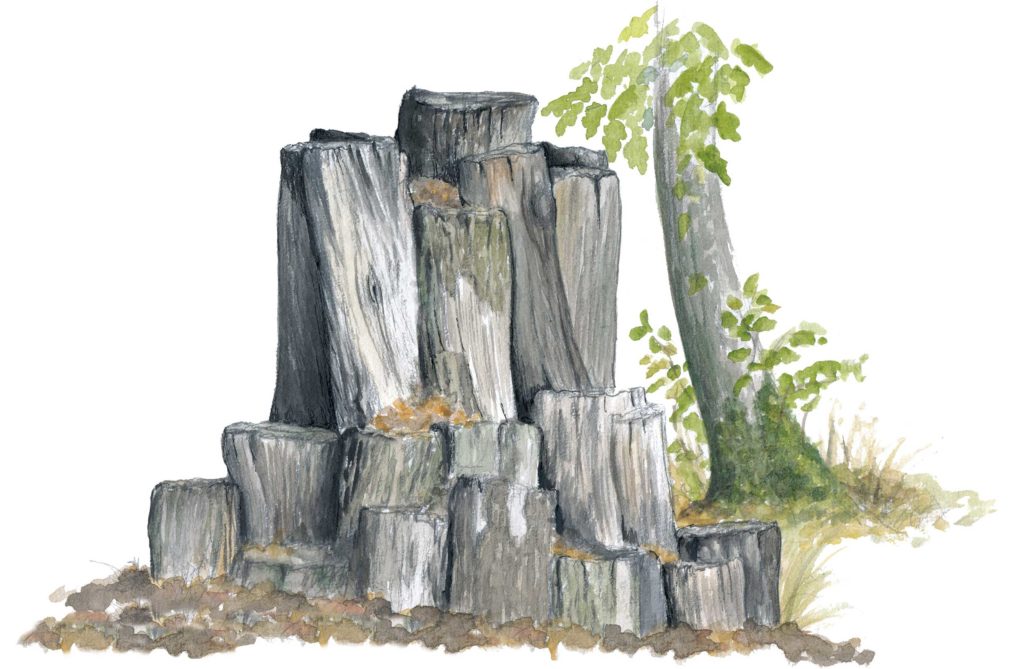Build a stag beetle loggery
To help the stag beetle, you can build a stag beetle loggery – a habitat that resembles the natural places where the species lays its eggs. Basically, a stag beetle loggery is a number of logs partially sunk into the ground, and covered with wood chips and shavings.
The location of the stag beetle loggery must be selected with care, as this can have a huge effect on how well the loggery works. Preferably, it should be located on a south-facing slope, with light, well-drained soil, because the stag beetle’s larvae like dry, warm places. It is also good if there are trees and bushes close by; these function as protection from crows and other predators, and as starting and landing points for the beetles, when they take to the air at dusk.
After selecting a location, dig a shallow hole (30–50 centimetres), which should preferably slope. If the soil is compact, there should also be drainage, so water doesn’t collect in the hole. Position logs of oak, beech, birch and/or hazel in the hole. Length and girth may vary, but a length of 50-150 centimetres is often suitable. If there are no trees nearby, a few longer logs can be used, from which the stag beetles can commence their flight. To hold the logs in place, and to prevent wild boars from digging up the logs as they search for stag beetle larvae or cocoons, strapping can be secured around the outermost logs. Finally, the remaining spaces around and between the logs are filled with shredded leaves, deciduous wood chips, or sand. Then it can all, if desired, be covered with a layer of soil.
The female stag beetles appear to be able to come to the loggeries to lay eggs already during the first season. For this reason it is good if construction of the loggery is finished in late May, when the stag beetles start to be active. The loggeries can also be used by many other beetles that live in wood such as the green rose chafer, rhinoceros beetle and Ampedus nigroflavus.

